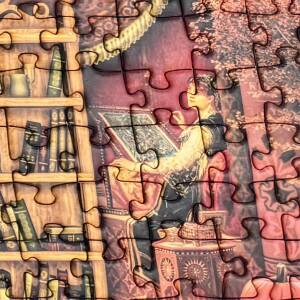Travelling by bus
We started the day by getting an early morning commuter train from Sevenoaks into London – great to witness the crowded train, but so glad we were not one of those suited people. Met up with our younger daughter at the Natural History Museum, after a long stop/start bus journey across the city. (Our daughter despairs of our insistence on using the buses because we like them and we don’t have to pay – she gets to places much faster by tube!)
We all went to the Wildlife Photographer of the Year Exhibition and really enjoyed it. It is great to see these magnificent photographs so splendidly displayed. And they really are wonderful – if there is a difference between photos of things and photos about things, then this exhibition exemplifies the difference. Every photo tells a story, puts the wildlife into context, says something important and/or has an emotional content, whether that be fear, survival, parenting.
We then went for a lovely lunch in a place in the now trendy area at the back of Kings Cross. Our daughter knows London so well and always manages to organise us going to somewhere brilliant. (Mind you we were late as the bus we insisted on going on took us all round London – this was a Number 10, the Original Tour Bus – very, very slowly. Our daughter sighed . . .)
She then went home and we took another bus to get to the British Museum, where we went to an exhibition of South African Art. This is an excellent exhibition, combining some of the nation’s oldest artwork –‘extraordinary examples of humankind’s earliest artistic endeavours – with contemporary works that comment on the present state of nation. A history of South Africa told through its artwork. Most thought-provoking.
This picture is a BMW that stands outside the exhibition. It was painted by artist Esther Mahlangu, who drew on her South African Ndebele heritage to transpose Ndebele house-painting designs onto the car. The work was commissioned by BMW in the 1990s to mark the end of apartheid. ‘Her work eloquently illustrates how local artistic traditions can be used to engage with contemporary political situations and events that communicate cultural and political identities to global audiences.’
A wonderful day . . . and I seem to have come away with two rather large books – how did that happen! I don’t think we will be taking any buses tomorrow!

Comments
Sign in or get an account to comment.


